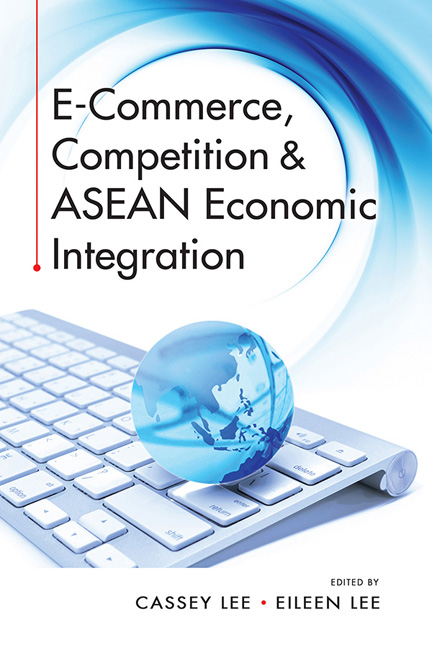Book contents
- Frontmatter
- Contents
- Acknowledgements
- About the Contributors
- 1 Introduction
- PART I
- PART II
- PART III
- PART IV
- 5 E-commerce and its Development in Thailand
- 6 E-commerce Development in Indonesia: Challenges and Prospects
- 7 Development of E-commerce in Malaysia
- 8 E-commerce in Singapore: Current State, Policies and Regulations
- 9 Competition and E-commerce in the Philippines
- 10 Vietnam: E-commerce Market Overview and Trends
- Index
7 - Development of E-commerce in Malaysia
from PART IV
Published online by Cambridge University Press: 31 January 2020
- Frontmatter
- Contents
- Acknowledgements
- About the Contributors
- 1 Introduction
- PART I
- PART II
- PART III
- PART IV
- 5 E-commerce and its Development in Thailand
- 6 E-commerce Development in Indonesia: Challenges and Prospects
- 7 Development of E-commerce in Malaysia
- 8 E-commerce in Singapore: Current State, Policies and Regulations
- 9 Competition and E-commerce in the Philippines
- 10 Vietnam: E-commerce Market Overview and Trends
- Index
Summary
Introduction
According to OECD (undated), an e-commerce transaction is the sale or purchase of goods or services, conducted over computer networks by methods specifically designed for the purpose of receiving or placing of orders. The goods or services are ordered by those methods, but the payment and the ultimate delivery of the goods or services do not have to be conducted online. An e-commerce transaction can be between enterprises, households, individuals, governments, and other public or private organizations. This encompasses a broad range of commercial activities, including among others, business to business (B2B or e-commerce between companies), business to consumer (B2C, or between companies and consumers), consumer to consumer (C2C), or e-commerce between consumers. Transactions to be included are orders made over the web, extranet or electronic data interchange. The type of transaction is defined by the method of placing the order. Transactions to be excluded are orders made by telephone calls, facsimile or manually typed email.
The development of e-commerce has attracted the attention of developing countries due to its potential to contribute towards sustainable development. Transaction costs can be reduced with e-commerce as it can be used to lower barriers to entry by eliminating certain costs related to having a physical storefront (WTO/OECD 2017). This provides more opportunities especially for small and medium enterprises (SMEs) to enhance their market access in domestic and foreign markets, thereby increasing the scalability prospects of these enterprises. When more inputs can be delivered digitally, it will also facilitate the management of fragmented production networks and the operation of global value chains (GVCs). Since it enhances productivity, more firms can also shift to exports. It also provides enhanced opportunities for women entrepreneurs and rural traders thereby empowering the disadvantaged. Consumers can also benefit through lower prices, greater convenience, and more varieties to choose from.
Rillo and dela Cruz (2016) reported the findings from Qiang, Rossotto, and Kimura (2009), which showed that increased broadband access has accelerated economic growth due to the close link between information and communications technology (ICT) diffusion and firm level productivity. They further cited a McKinsey Global Institute study (2011) that found internet access has helped SMEs in eight developing countries to create 3.2 jobs for every job lost.
- Type
- Chapter
- Information
- E-Commerce, Competition and ASEAN Economic Integration , pp. 169 - 192Publisher: ISEAS–Yusof Ishak InstitutePrint publication year: 2019



